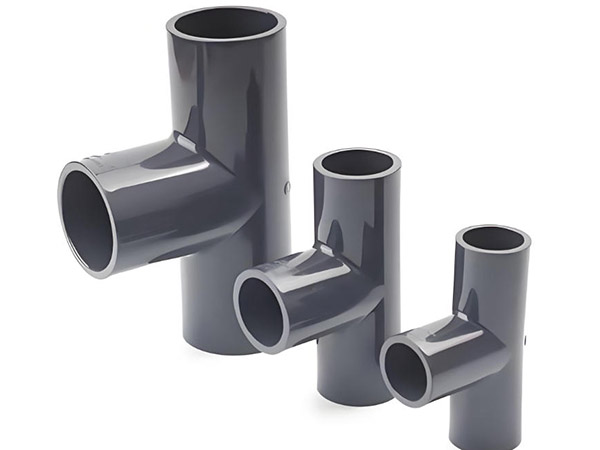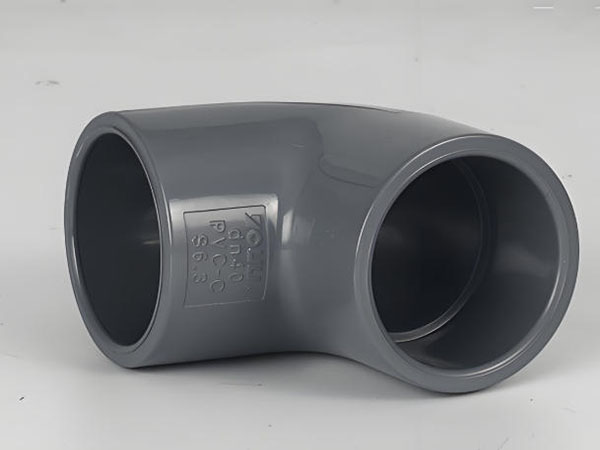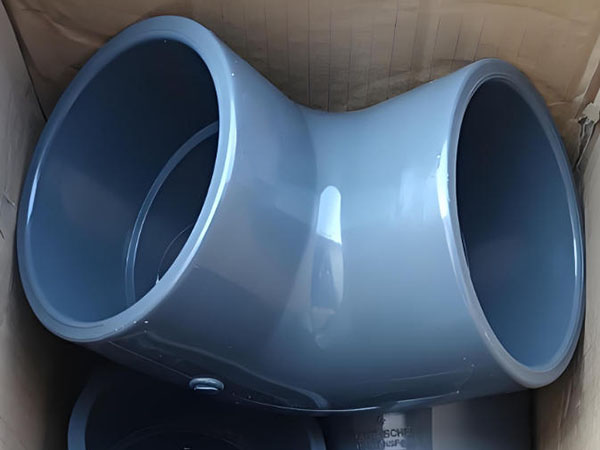In modern construction, industry, and water supply and drainage systems, the selection of pipes and their corresponding fittings is crucial. With increasing demands for project quality and operational safety, CPVC (chlorinated polyvinyl chloride) pipes and fittings have gradually become a mainstream product in the global market due to their superior performance. CPVC fitting dimensions are crucial parameters that must be considered during design and construction, directly impacting the compatibility, ease of installation, and operational safety of the piping system.

CPVC Fitting Dimensions and Types
CPVC fittings come in a wide variety, including elbows, tees, reducers, unions, flanges, and valve connectors. Their dimensions are typically designed to comply with international and regional standards, such as ASTM D2846, ASTM F441, ISO, and DIN, to ensure compatibility with CPVC pipe. Common sizes are as follows:
Diameter Range: Typically ranges from 1/2 inch (approximately 20 mm) to 6 inches (approximately 160 mm), with some industrial-grade fittings reaching up to 12 inches (approximately 315 mm).
Socket Depth: Specified by diameter, typically between 12 mm and 40 mm, ensuring a secure solvent-bonded joint. Wall Thickness Design: Wall thickness varies depending on the pressure rating (e.g., PN10, PN16, or Sch40, Sch80) to meet the needs of hot and cold water or industrial fluid transportation.
Through precise dimensional standards, CPVC fittings ensure a tight connection with the pipe, ensuring the stability of the entire system under high-temperature, high-pressure, or long-term operation.
The Importance of CPVC Fitting Dimensions
Installation Compatibility: Only standardized fitting dimensions ensure consistent pipe diameters, preventing leaks or installation difficulties caused by dimensional errors.
System Safety: Appropriate wall thickness and socket depth design enhance bond strength and reduce the risk of bursting due to temperature and pressure fluctuations.
Construction Efficiency: Standardized CPVC fitting dimensions enable quick identification and connection, significantly shortening construction time.
International Compatibility: Different countries have different piping specifications, but unified dimensional standards allow CPVC fittings to be widely used in the global market.

Size Requirements in Applications
Residential and Commercial Buildings: CPVC fittings are primarily used for hot and cold water piping systems. Common sizes in these applications range from 1/2-inch to 2-inch, meeting daily household water pressures while facilitating concealed installation and saving space.
Industrial Piping: In the chemical, pharmaceutical, and food industries, fittings from 3-inch to 8-inch sizes are often required to ensure high-flow fluid transport. Fire protection systems: Some CPVC fittings are specifically designed for sprinkler systems, with sizes ranging from 1 to 6 inches and meeting UL and FM certification standards.
Agricultural irrigation: Large-diameter CPVC fittings (e.g., 110 mm and above) are commonly used in greenhouse or field irrigation systems. They are corrosion-resistant and easy to install.
Advantages of CPVC fitting dimensions
Precise standards: CPVC fitting dimensions are manufactured in strict accordance with international specifications, ensuring high compatibility with similar products.
High-temperature adaptability: CPVC fittings maintain strength even at temperatures around 93°C, making them suitable for hot water and some industrial fluid transport.
Lightweight and easy to install: Compared to metal fittings, CPVC fittings are lightweight, and solvent bonding requires precise dimensions, making installation simple and efficient.
Long-term reliability: Optimized wall thickness and socket design extend service life and reduce maintenance costs caused by dimensional issues.
Versatile: A comprehensive range of sizes, including both American ASTM and metric DIN/ISO, is available to meet diverse project requirements.

Purchasing and Installation Recommendations
When purchasing CPVC fittings, first determine the standard system used for the project (e.g., Imperial or Metric), then select the appropriate size for the pipe diameter. For high-pressure or high-temperature applications, a thicker wall (e.g., Schedule 80) is recommended. During installation, ensure the pipe insertion depth meets the standard to avoid leaks caused by insufficient bonding area.
Proper design and strict control of CPVC fitting dimensions are fundamental to the reliable operation of CPVC piping systems. Standardized dimensions not only improve installation efficiency and safety but also ensure long-term system stability under high temperatures and pressures. As performance requirements for piping systems in the construction, industrial, and agricultural sectors increase, CPVC fittings and their precise dimensions will continue to play a vital role worldwide.






















